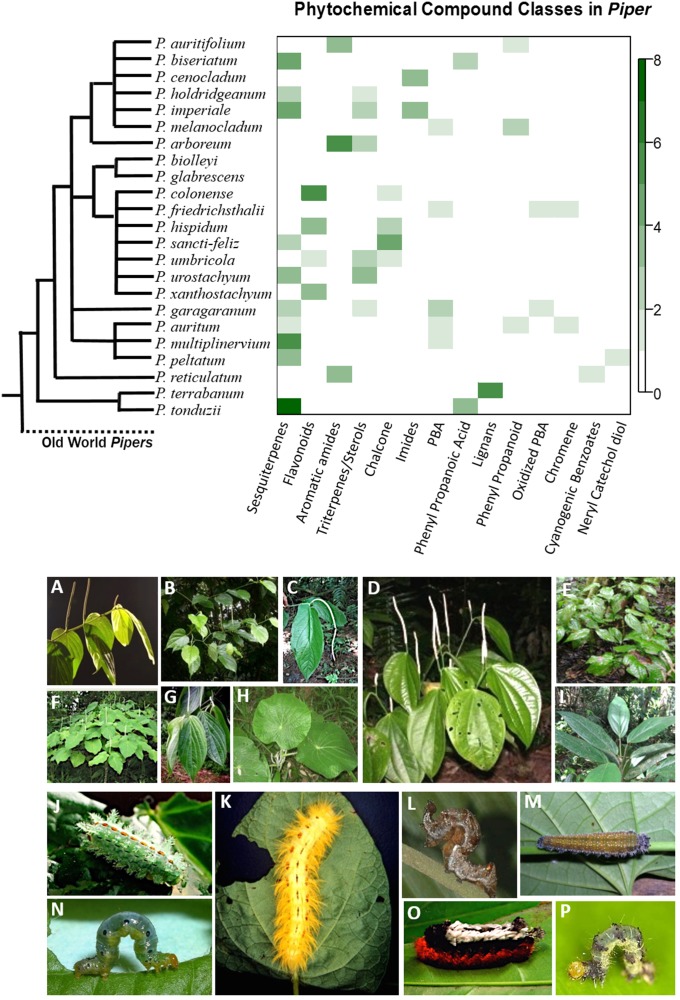Fig. 1.
Photographs include examples of Piper species and herbivores included in this study. (Top) The heat map summarizes the number of compounds in each class that have been discovered in the corresponding species; absent classes are shown in white, and more abundant compounds are depicted by darker colors. (A) Piper santi-felicis. (B) Piper multiplinervium. (C) Piper cenocladum. (D) Piper reticulatum. (E) Piper holdrigeanum. (F) Piper auritum. (G) Piper xanthostachym. (H) Piper peltatum. (I) Piper melanocladum. (J) Euclea plumgma (Limacodidae, host: 1 Piper sp. and 6 other species from different families). (K) Apatelodes erotina (Apatelodidae, hosts: 5 Piper spp. and 18 other species from different families). (L) Gonodonta latimacula (Erebidae, hosts: 3 Piper spp.). (M) Consul parariste jansoni (Nymphalidae, hosts: 3 Piper spp.). (N) Eois picalis (Geometridae, host: 1 Piper sp.). (O) Tarchon felderi (Apatelodidae, hosts: 8 Piper spp. and 40 other species from different families). (P) Eois nympha (Geometridae, hosts: 6 Piper spp.).

